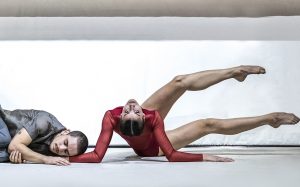A Contemporary Take on a Classic Fairytale
 The start of December brings a promising new interpretation of a well-known classic fable “The Sleeping Beauty.” Re-adapted as a ballet, “Sleeping Beauty,” is a new dance performance set to take place at the Opera di Firenze (Piazzale Vittorio Gui, 1) on Thurs. 7 (8 pm), Sat. 9 (3:30 & 8 pm) and Sun. 10 (3:30 pm).
The start of December brings a promising new interpretation of a well-known classic fable “The Sleeping Beauty.” Re-adapted as a ballet, “Sleeping Beauty,” is a new dance performance set to take place at the Opera di Firenze (Piazzale Vittorio Gui, 1) on Thurs. 7 (8 pm), Sat. 9 (3:30 & 8 pm) and Sun. 10 (3:30 pm).
Directed by the young dancer Diego Tortelli and presented by The Junior Tuscan Ballet Company comprised of young ballet performers ranging between the ages of 16 to 24, the act will retell this family fairytale solely through the use of choreographic language. Accompanying the show will also be live music provided by Maggio Musicale Orchestra with the sound of Tchaikovsky. (Tickets range from €5 to €50, check Opera di Firenze’s website to compare seat positions and prices).
In Tortelli’s “Sleeping Beauty,” set in a metropolitan city, the director explores the contrast of what is real and what is all make-believe. “In a contemporary world where we are in a constant rush, we all share this incessant obsession with perfection, in the search to make one’s ideal dreams come true. This is my version of the story,” says Tortelli.
In this adaptation the director’s true feelings and thoughts are what shine through, created directly from his own experiences of daily-life situations. Answering the question ‘What does Sleeping Beauty represent for us in today’s society?’ comes to life the story of a young poet who feels unhappy with her daily life and is in constant search for more. This is a young, disillusioned girl, lost in her reverie and languorous state, yearning for a better world, just like the princess (Sleeping Beauty) is frozen in her dreaming, serene state in the true, original story.
The Junior Tuscan Ballet Company creates an opportunity for young students to learn the skills required to start their dancing career, while being immersed in a professional setting.
The local dance school is one of the best around and has performed on many important and major theatre stages all over Florence and has even received great acknowledgement such as from the Magazine ‘Danza e Danza’ (Dance and Dance).
Receiving three times the Danza e Danza Award, the yearly accolade is given to schools by important dance critics. The school received two awards for best production and one for best interpretation. Works produced by the Junior Ballet Company include; “Coppelia,” “Giselle” and “Romeo and Juliet.”
The school has received such great success partly thanks to its artistic director and that of the Balletto di Toscana (Tuscan Ballet Company), Cristina Bozzolini. Being the former main dancer of the Maggio Musicale Ballet Corps, she is devoted to delivering new contemporary dance performances.
“The Sleeping Beauty” although having been re-written and adapted several times over the years by different writers, probably the most well-known version was that of French writer Charles Perrault with “The Sleeping Beauty in the Wood” (1697).
Perrault’s story deals with a King and Queen who for so long wish to become parents. When finally the desire comes true, they celebrate the miracle with seven good fairies, which will become the daughter’s godmothers. One of these has been forgotten over the years and believed to have deceased.
The old woman who is bitter, casts a curse on to the beautiful princess in which she will die on her 15th birthday. Luckily one of the good fairies, although unable to remove the curse, alters the punishment to a deep sleep lasting 100 years. As often in fairytales, a handsome prince saves the young woman.
Brothers Grimm also retold the same tale in 1812 as a short condensed, story, calling it “Little Briar Rose.” In their version a ‘wise’ old woman, as opposed to a fairy, curses the princess into a life-long sleep.
“The Sleeping Beauty,” however, is a tale that we will all, always remember, irrelevant of what version we grew up listening to.
Enter the dream-like world of this contemporary adaptation of “Sleeping Beauty,” where make-believe dwells amongst real life. (karen gee)
